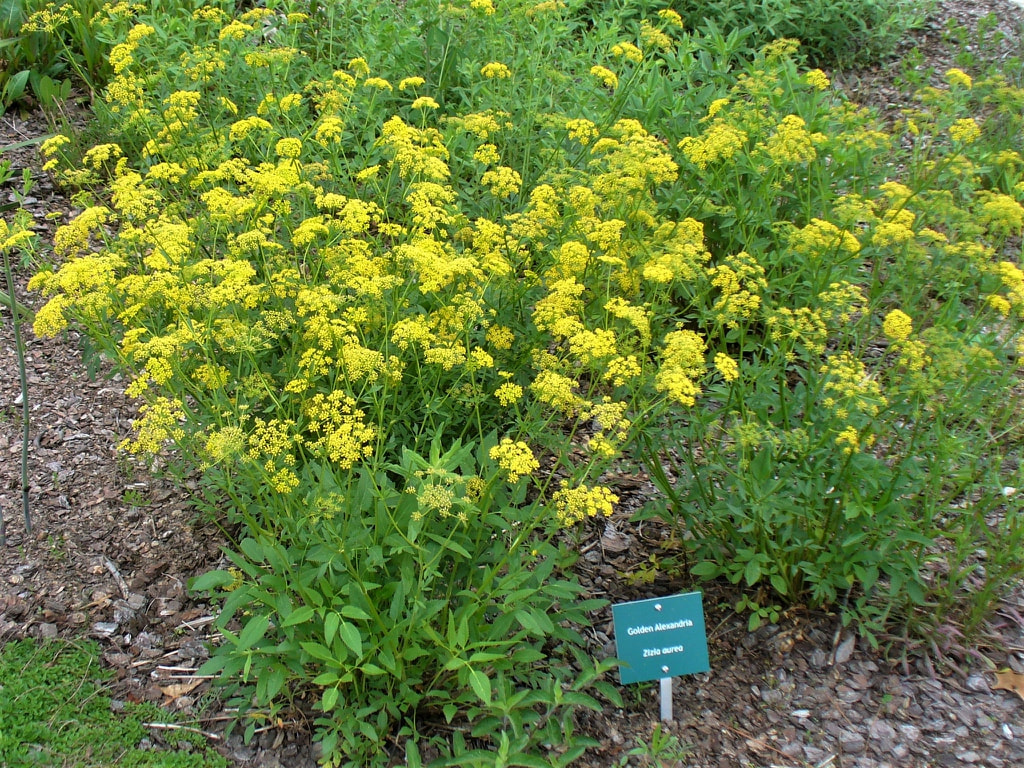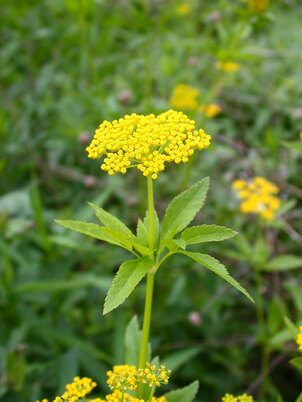Golden Alexander
Zizia aptera
Heart-leaf Golden-Alexanders is a herbaceous perennial found in moist woodland areas, thickets, glades, prairies, and clearings. It can grow singly or in small colonies/clumps.
The absence of a flower stalk on the central flower of each umbel makes this variety different from other members of the carrot family. Sometimes confused with Zizia aurea, its simple, heart-shaped basal leaves make this variety unique.
A typical plant can have two or more clusters of flowers. These flat-topped clusters bloom in late spring to early summer on the upper stems. These umbels (a flower cluster with stalks of equal length that form a common center) are 2 to 3" across and contain 7 to 15 umbellets, The umbellets each have 10 to 20 flowers. Each tiny flower has 5 petals that remain nearly closed. The tiny flowers are a mere 1/8 inch across.
Bees, pollinating flies, butterflies, beetles, and other plant insects seek the nectar and pollen from this plants flowers. The caterpillars of the black swallowtail butterfly eat the foliage.
The absence of a flower stalk on the central flower of each umbel makes this variety different from other members of the carrot family. Sometimes confused with Zizia aurea, its simple, heart-shaped basal leaves make this variety unique.
A typical plant can have two or more clusters of flowers. These flat-topped clusters bloom in late spring to early summer on the upper stems. These umbels (a flower cluster with stalks of equal length that form a common center) are 2 to 3" across and contain 7 to 15 umbellets, The umbellets each have 10 to 20 flowers. Each tiny flower has 5 petals that remain nearly closed. The tiny flowers are a mere 1/8 inch across.
Bees, pollinating flies, butterflies, beetles, and other plant insects seek the nectar and pollen from this plants flowers. The caterpillars of the black swallowtail butterfly eat the foliage.

